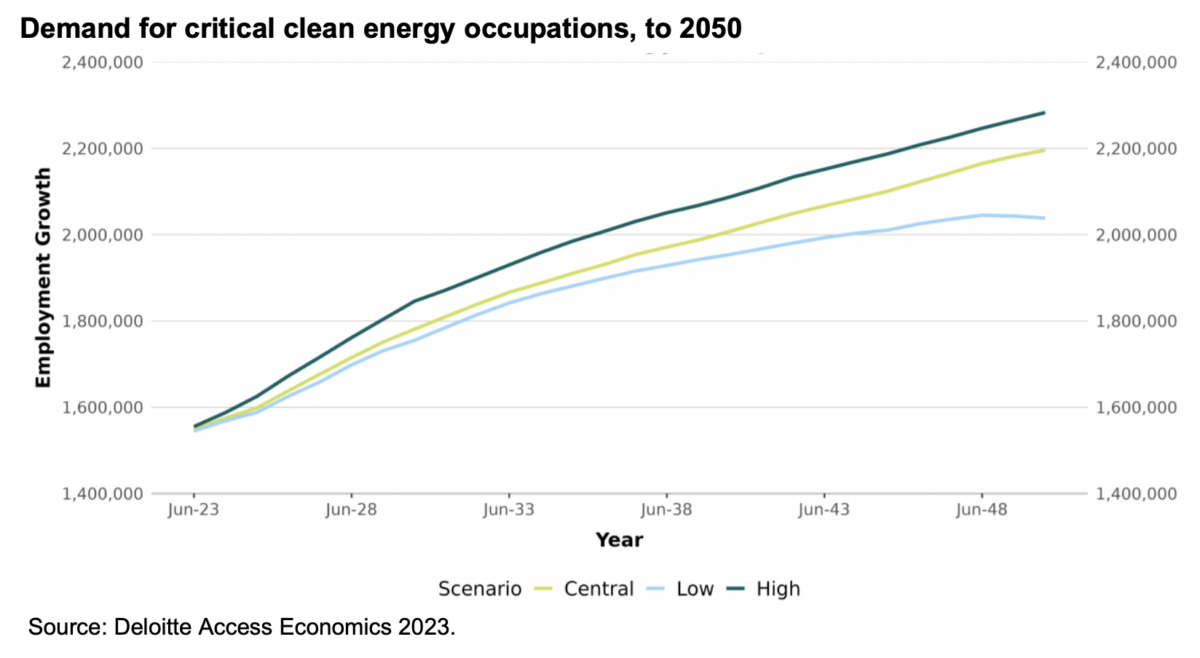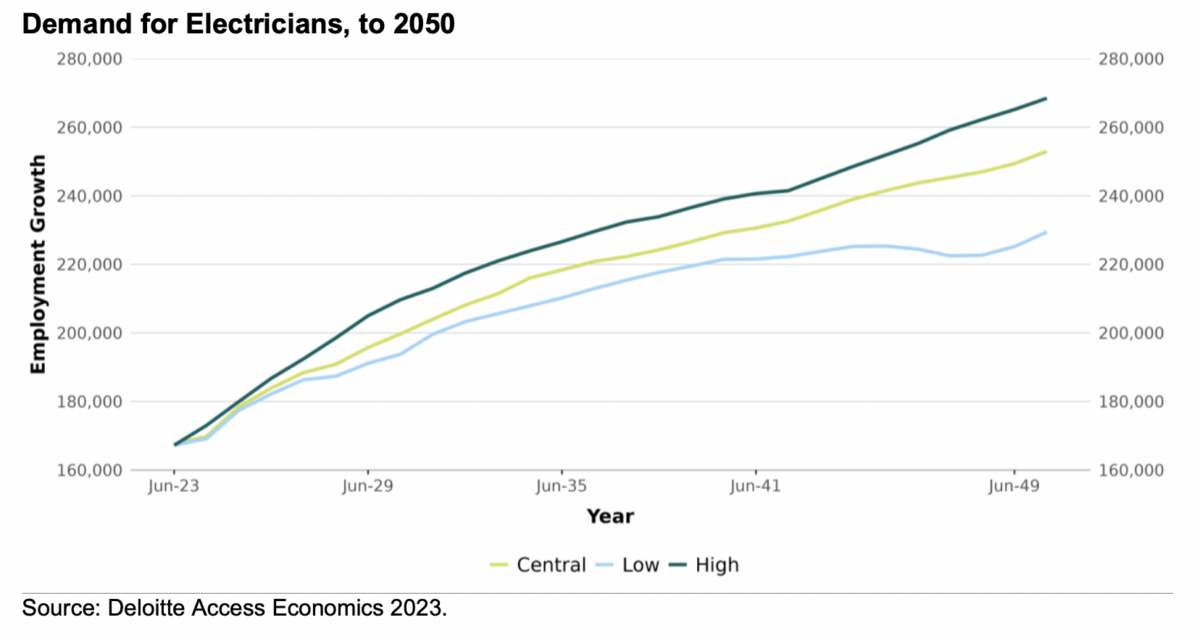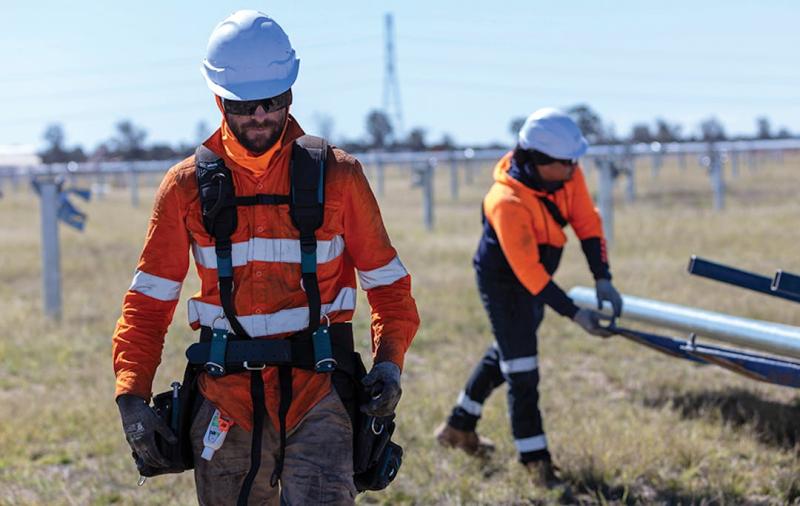Australia is going to need approximately 26,000 to 42,000 more electricians in the next seven years and, on the more distant horizon, almost two million more workers to enable its transition to net zero by 2050.
“Our supply forecasts strongly suggest there is insufficient capacity in the training and migration pipelines to meet this demand,” the federal government’s ‘Clean Energy Generation Workforce’ report, published on Tuesday, says.

Image: Australian government; source: Deloitte Access Economics
The workforce transformation required by the energy transition is “substantial but not unprecedented,” the report adds. “Like the post-war industrial transformation and the digital transformation of the late twentieth century, a new generation of workers will be required.”
Alarmingly, the report paints a picture of an industry not particularly apt at attracting and keeping the workers it needs. The energy industry is overwhelmingly male – something the report says requires serious redress. “The energy sector also has the third highest incidence of workplace sexual harassment, with 71% of women having experienced sexual harassment in the last 5 years,” the report notes.
“Many female engineers report experiencing gender discrimination and bullying in the workplace and do not feel they have equal access to career progression opportunities, salary advancement or mentoring.”

The industry also ranks poorly for migrant participation, which is underrepresented. Moreover, migration alone cannot plug Australia’s skills gap, the report says, noting that competition for skilled migrant workers is incredibly high, which many other nations also vying to attract clean energy workforces.
“We can’t grow the workforce at the pace and scale required if large groups of the population are excluded, including women, First Nations people, people with disability, and recent migrants whose skills’ potential are underutilised,” the report says.
Workers in clean energy are also typically paid less than traditional energy salaries, and the jobs are in regional and remote Australia which can make the jobs inaccessible for some.
For more job opportunities to be filled by local regional Australia though, “there needs to be substantial uplift in education and training,” the report says.
“The next seven years will be critical in establishing or strengthening the education, training, and migration systems to ensure that we have the workforce to deliver the energy transition,” Clean Energy Council Director of Workforce Development, Dr Anita Talberg, said.
She added that resolute action to attract the new talent, particularly across STEM [science, technology, engineering, and mathematics] fields and construction is needed to fulfil the capability gaps that currently exist in Australia’s clean energy workforce.
The biggest shortfalls are projected not among university graduates, but those from TAFEs and other Vocational Education and Training (VET) qualified workers.
This content is protected by copyright and may not be reused. If you want to cooperate with us and would like to reuse some of our content, please contact: editors@pv-magazine.com.









3 comments
By submitting this form you agree to pv magazine using your data for the purposes of publishing your comment.
Your personal data will only be disclosed or otherwise transmitted to third parties for the purposes of spam filtering or if this is necessary for technical maintenance of the website. Any other transfer to third parties will not take place unless this is justified on the basis of applicable data protection regulations or if pv magazine is legally obliged to do so.
You may revoke this consent at any time with effect for the future, in which case your personal data will be deleted immediately. Otherwise, your data will be deleted if pv magazine has processed your request or the purpose of data storage is fulfilled.
Further information on data privacy can be found in our Data Protection Policy.